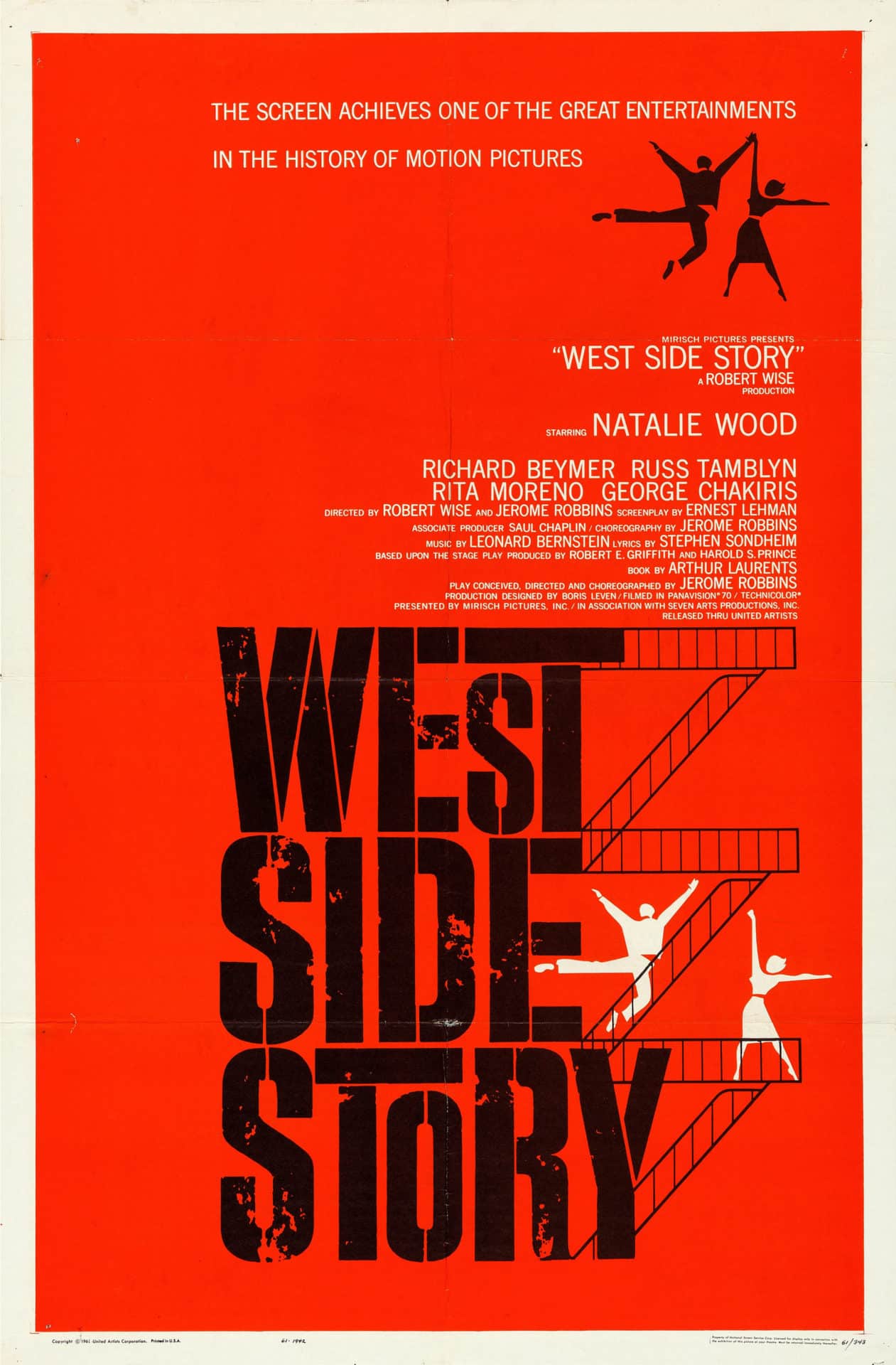
- Starring
- Natalie Wood, Richard Beymer, Russ Tamblyn
- Writer
- Ernest Lehman
- Directors
- Jerome Robbins, Robert Wise
- Rating
- PG (Canada, United States)
- Running Time
- 153 minutes
Overall Score
Rating Summary
For those who are still unaware, 1961’s West Side Story is an adaptation of the 1957 Broadway musical of the same name. It is a modernized update on the classic Romeo and Juliet story in which Tony and Maria (Beymer and Wood, respectively) pine for each other while being involved in New York street gangs. On the harsh streets of the upper west side, the Sharks, led by Maria’s sister Bernardo (George Chakiris), and the Jets, led by Riff (Tamblyn) battle for control of the turf. Also joining the fray is Bernardo’s girlfriend Anita (Rita Moreno).
It’s almost difficult to discuss West Side Story in complex statements because the story is so familiar to the point where it’s entrenched in popular culture, to say nothing of the rest of the film. For those remotely familiar with the Romeo and Juliet tale, none of this should come as much of a surprise to viewers, but there’s still something to be said for the film’s timeless quality, even with some of its more dated and questionable aspects. At various points, this film becomes an art form in and of itself. After a prologue, it starts with a bang with swinging jazz music and the intricate dancing of the gang members.
The thematic analysis of race relations within this film is very much of the time as 1961 was seeing the brink of a rising Civil Rights movement. One highlight is the “America” number. Chakiris and Moreno play off each other with great charisma and chemistry, and their barbs come with a harp humor as well. What’s notable is Bernardo doss not focus on the benefits of living in Puerto Rico, but just the ugly downsides of being a Puerto Rican in America: “if you’re all white in America,” “twelve in a room in America,” Chakiris isn’t remembered for being a great actor but he does sell the sardonic cynicism in Bernardo’s worldview, and on a pure performance level, he’s incredible.
But of course, the one who almost swallows West Side Story with their superhuman charisma was of course Moreno. Her Anita is in essence what one loves about supporting performances. She’s fiery, intuitive, spirited, and seems to have her head in the game more than some of the other principal cast members. Stuck somewhere between glamour and street knowledge and disgusted with the street gangs’ meat-headed behavior, she feels like the most fully-realized character in the whole movie! She leaves viewers wanting more yet they are satisfied with what they get out of her moments, to say nothing of her bond with Wood’s Maria.
As mentioned, this film almost feels like a piece of art; Wise’s co-direction allows viewers to take in the rough-shod nature of the ratter sides of working class Brooklyn, with all its local shops, alleys and basketball courts. The production design feels theatrical but indebted to a certain reality. The cinematography emphasizes red to an almost overwhelming degree, as one definitely gets the feel of a sweltering summer. Jerome Robbins’ choreography is brilliantly executed as the dance numbers emphasize the subjects discussed and the characterizations of each character. This feels like an active, vibrant world, and the film deserves credit for that.
Of course, the film was not without its obvious flaws. The brownface and fake accents are problematic by any standard, and the two main characters are easily the least interesting aspects of this movie. Beymer and Wood are fine but they don’t have much to do with their relative blank slates of characters. They do at least function within the film and everything surrounding them is so good that it hardly matters.
In the end, it goes without saying that the 1961 iteration of West Side Story is indeed a classic that deserves to be seen by generations to come, and is all the more prescient as the decades go by.
still courtesy of United Artists
Follow me on Twitter, Instagram, and Letterboxd.
If you liked this, please read our other reviews here and don’t forget to follow us on Twitter or Instagram or like us on Facebook.
Discover more from
Subscribe to get the latest posts sent to your email.

